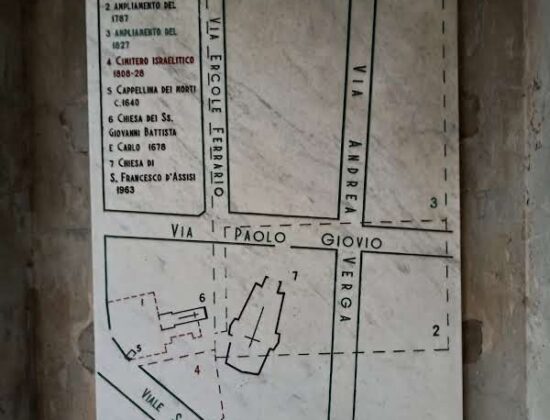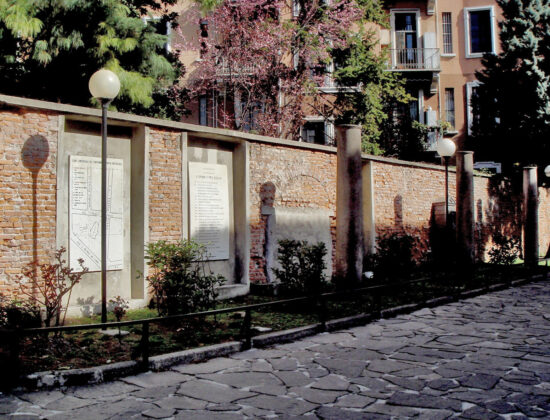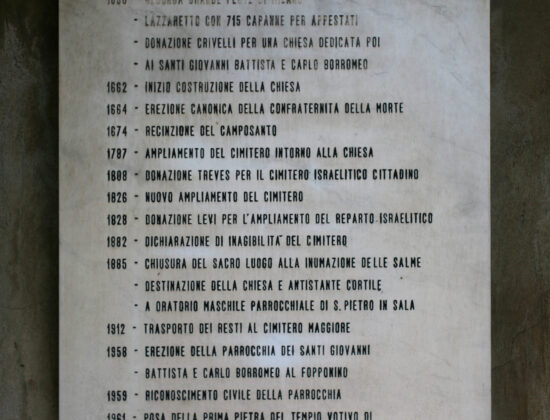The first Jewish known cemetery dates back to the time of Gian Galeazzo Visconti, Lord and then Duke of Milan from 1385 to 1402 and lay outside Porta Tenaglia at the time one of the city gates, in what is now via Bramante number 6, in an area that has undergone major changes.
When Jews were once again allowed into the lands under Milan a first section was officially allocated to Jewish burials in 1808: it was in the Porta Vercellina area, subsequently renamed Porta Magenta known as Fopponio di Porta Vercellina or Foppone di San Giovannino alla Paglia. The cemetery no longer exists but would have been near Piazza Aquileia, between what are now via S. Michele del Carso, Verga and Giovio. It was one of Milan’s cemeteries outside the city close to the Spanish Walls.
The cappella dei Morti (Chapel of the Dead 1640) and the Church of San Giovannino alla Paglia (1662), at the back of which we now have the church of Saint Francis of Assisi designed by architect Gio Ponti (in 1964 ) is all that remains in the area. Two plaques on the inner side of the boundary wall recall the history of the site: one with the plan of the cemetery with the Jewish plot indicated, and the other lists the main events on the site and mentions the benefactors Treves and Levi who made generous donations to develop the Jewish section in 1808 and 1828 respectively.
The area was abandoned 1895 and was physically dismantled in 1919. In the meantime a Jewish Section was opened at the Monumental Cemetery.
Viale S. Michele del Carso 34 (ang. piazza Aquileia)
Info e orari di apertura: https://www.facebook.com/fopponino/



